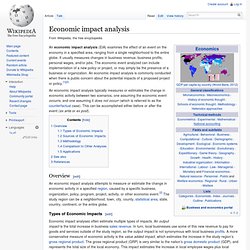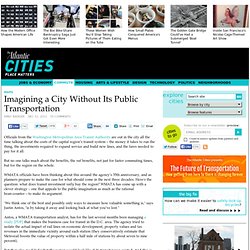

Amtrak: History of America’s Railroad. Economic impact analysis. An economic impact analysis (EIA) examines the effect of an event on the economy in a specified area, ranging from a single neighborhood to the entire globe.

It usually measures changes in business revenue, business profits, personal wages, and/or jobs. The economic event analyzed can include implementation of a new policy or project, or may simply be the presence of a business or organization. An economic impact analysis is commonly conducted when there is public concern about the potential impacts of a proposed project or policy.[1][2] An economic impact analysis typically measures or estimates the change in economic activity between two scenarios, one assuming the economic event occurrs, and one assuming it does not occurr (which is referred to as the counterfactual case). How to do an economic impact study, properly. Imagining a City Without Its Public Transportation - Commute. Officials from the Washington Metropolitan Area Transit Authority are out in the city all the time talking about the costs of the capital region’s transit system – the money it takes to run the thing, the investments required to expand service and build new lines, and the fares needed to pay for it all.

But no one talks much about the benefits, the real benefits, not just for faster commuting times, but for the region on the whole. WMATA officials have been thinking about this around the agency’s 35th anniversary, and as planners prepare to make the case for what should come in the next three decades.